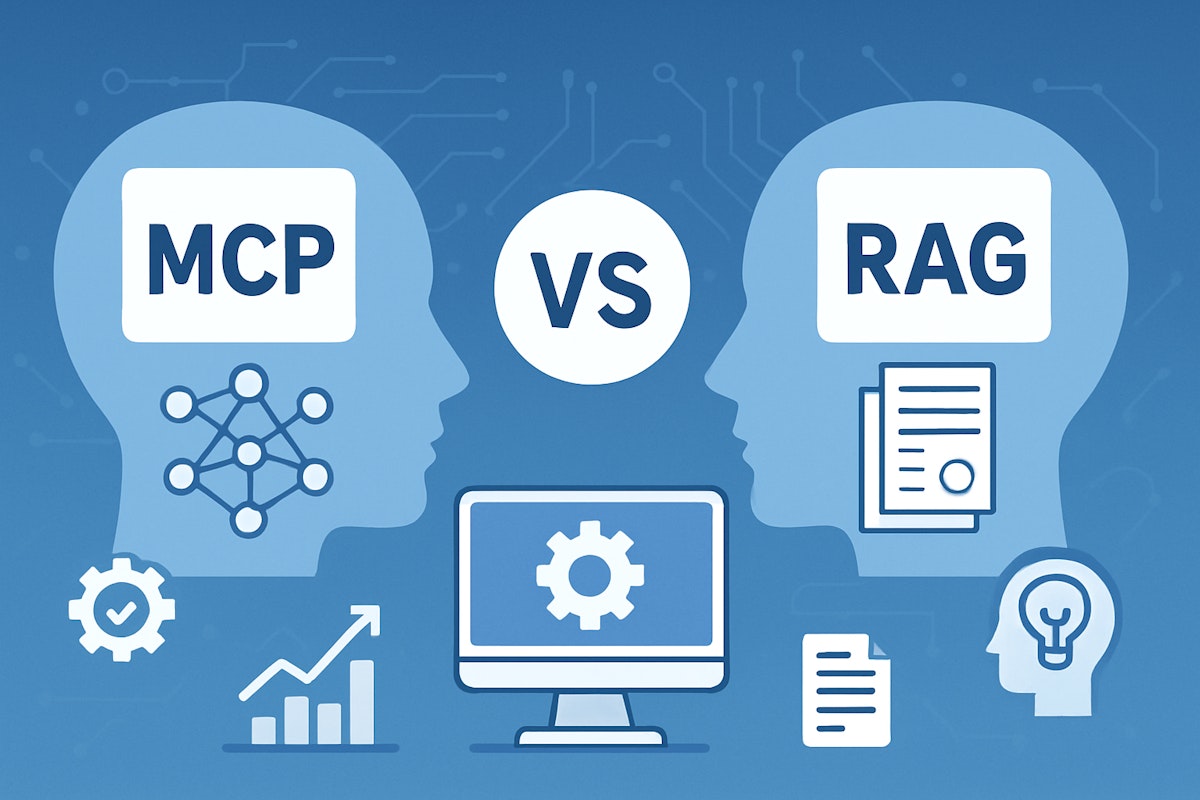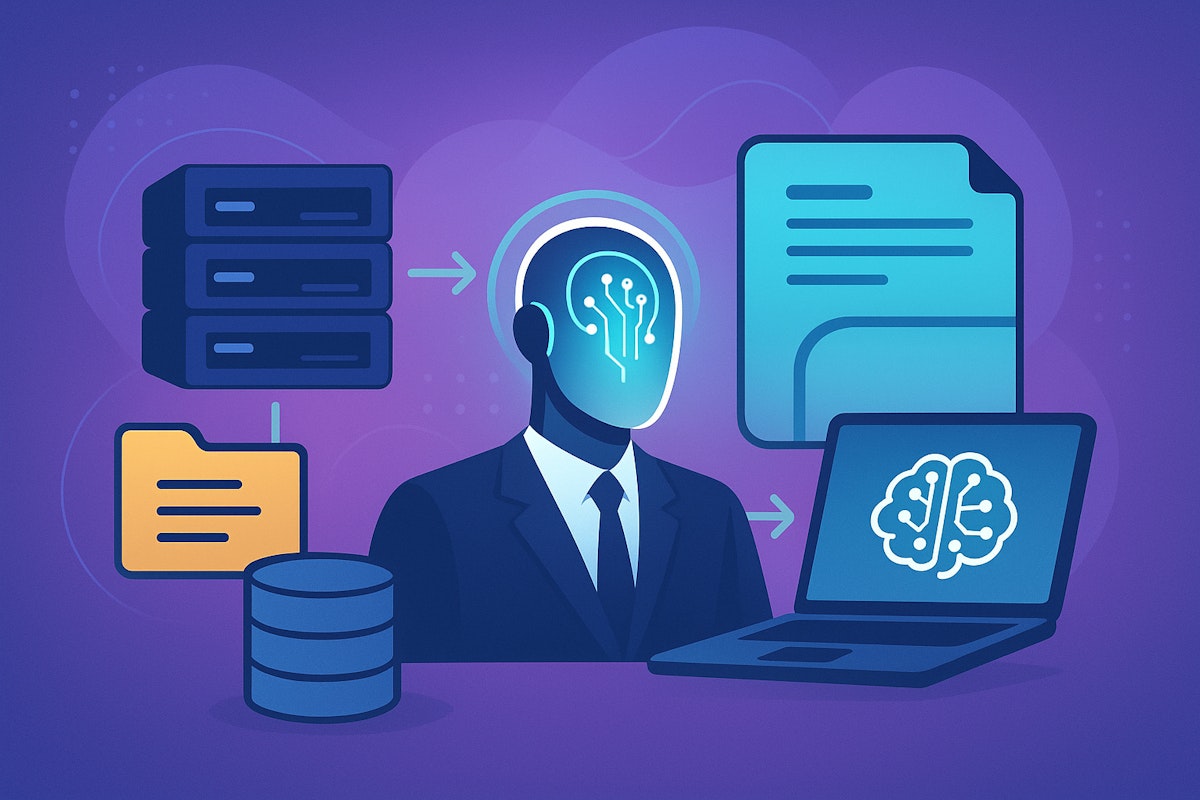Table of Content
A standard Retrieval-Augmented Generation (RAG) system leverages Large Language Models (LLMs) to retrieve information from private enterprise data. The LLM then summarizes, interprets, or synthesizes that information to answer your query.
But can it deliver a deeper analysis? Can it ask questions like these?:
- Why did our Q3 sales dip in the Northeast, and what patterns connect customer churn to support tickets?
- “Which compliance risks appear across our contracts, and what actions should we take?”
- “What’s driving delays in our supply chain, and how do we fix them?”
The answer is, probably not. Once a question requires multi-step reasoning, cross-source correlation, or actions across multiple data sources, traditional RAGs are no longer sufficient. That’s where agentic RAG shifts the landscape.
It combines classic retrieval with autonomous agents that can reason, plan, validate, call tools, and execute multi-step workflows.
Key Differences: Traditional RAG vs Agentic RAG
Understanding Agentic RAG: Architecture, Core Components, and Frameworks
Architecture overview
1. Data layer
This is where your enterprise knowledge lives: CRMs, ERPs, BI exports, wikis, PDFs, contracts, support tickets, email threads, and analytics exports. The data is cleaned, structured, chunked, and prepared for embedding. Good data hygiene here determines 80% of downstream accuracy.
2. Retrieval layer
Your processed documents and records are stored inside a vector database, such as Pinecone, FAISS, or Weaviate. Embeddings allow the agentic RAG system to identify semantically relevant information. Metadata filters, like department, data, author, and classification, ensure precision and enforce access rules.
3. LLM layer
The LLM interprets queries, chains reasoning steps, and synthesizes answers. Depending on your compliance, latency, and cost requirements, this could be a managed API (e.g., OpenAI GPT-5.1, Claude, Llama 4) or a private/fine-tuned model hosted in your virtual private cloud.
4. Agentic orchestration layer
This is the upgrade that transforms RAG into agentic RAG. Here, agents:
- Plan multi-step actions
- Verify retrieved chunks
- Call tools or APIs
- Request additional context
- Break large tasks into sub-tasks
Programming frameworks that power this layer include LangChain Agents, CrewAI, and AutoGen.
5. Memory and feedback layer
Because of this layer, the agentic RAG system learns and refines responses over time:
- Short-term memory holds conversation context
- Long-term memory typically writes validated facts back to the vector store
- Optionally, structured memory, such as relational tables or knowledge graphs, may support richer entity/relationship reasoning
Observability and feedback tooling—for example, Phoenix for tracing/debugging and LangFuse for monitoring, evaluation, and trace logging—detect hallucinations, stale embeddings, or retrieval issues and feed corrective signals back into the pipeline.
Core frameworks for building agentic RAG systems
Did You Know?
82% of organizations that successfully converted over half of their GenAI initiatives into production had already adopted an AI platform. — IDC
How to Build an Agentic RAG System on Your Private Enterprise Data
1. Prepare and ingest your data
Start with a simple question: where’s your knowledge stored?
Typical sources include:
- CRMs and ERPs
- BI exports and reports
- PDF contracts, policies, SOPs
- Support tickets and email threads
- Internal wikis and knowledge bases
For each source, decide on the scope, update frequency, and access controls. Then run an Extract, Load, Transform (ELT) pipeline to:
- Extract the content using tools like Unstructured.io, LangChain document loaders, and a custom ETL
- Normalize formats by stripping boilerplate, removing navigation junk, and fixing encoding
- Chunk text into a retrieval-friendly segment, for instance, per section, clause, and paragraph
How Generative AI and RAG Revolutionized Pharma Research: Faster Insights, Better Drug Discovery!
Explore NowInsight:
Most enterprises report that data preparation is one of the slowest and most challenging steps when building RAG pipelines. — Capgemini
2. Set up the vector store for retrieval
Once your content is cleaned and chunked, pick a vector database deployment model that aligns with scale, compliance, and ops capabilities.
Next, generate embeddings by sending your cleaned text to an embedding model (e.g., OpenAI GPT-5.1, Claude, Llama 4, Cohere, or Sentence Transformers), which returns a numeric vector representation for each chunk.
Then upsert embeddings by writing each vector and its associated metadata into your vector database via its “upsert()” or “insert()” API. Lastly, implement retrieval with filters so that only documents matching attributes such as department, region, or role are returned.
3. Integrate the LLM and agentic orchestration layer
Choose an LLM based on your constraints. Add an agentic orchestration layer using frameworks like LangChain Agents, CrewAI, or AutoGen.
In this step, you define whitelisted tools and their schemas, version them, and restrict allowed actions. Decide how agents select tools, how many reasoning steps are allowed, and how to handle retries or verification.
For example, when a sales leader asks: “Show me last quarter’s top 10 at-risk accounts and summarize why they’re slipping,” the agentic RAG flow might:
- Use RAG to pull recent QBR notes and support tickets
- Call a CRM tool to fetch pipeline and renewal data
- Run a simple risk scoring function
- Generate a ranked list with explanations
4. Integrate memory and multi-step reasoning
Agents become truly valuable once they can remember context and engage in multi-step reasoning, rather than simply answering a single question and stopping. This requires combining short-term and long-term memories, such as conversation history and validated facts.
Most production systems use components like LangChain’s memory modules, LlamaIndex’s index abstractions, or AutoGen’s multi-agent dialogue patterns to support these capabilities. With memory in place, you can design deliberate agent behaviors, such as:
- “Verify retrieved content before answering”
- “If context isn’t enough, re-query with a refined search”
- “Cross-check results from two solutions and reconcile them”
Now, instead of stopping at the first retrieval, the agentic RAG system checks, refines, iterates, and constructs a stronger answer.
5. Ensure security and compliance for private data
To protect your agentic RAG system, secure data in transit and at rest. Apply Transport Layer Security (TLS) to all traffic and encrypt indexes, storage, and logs. Impose role-based access control (RBAC) so retrieval is restricted to the permission of the requesting user.
In addition, apply prompt-level governance to ensure sensitive fields are never echoed back in model responses, even if they appear in the underlying source, and map all controls to the standards your business follows, such as GDPR, HIPAA, SOC 2, or ISO 27001.
When regulations or internal policies demand stricter data residency, isolate your LLM layer in a VPC or on-prem environment to keep everything inside your controlled perimeter.
6. Test, validate, and deploy the agentic RAG system
First, define a comprehensive test suite that includes standard test cases, FAQs, analytical queries, and deliberate “trick prompts” designed to surface hallucinations, leakage risks, or incorrect tool usage. Next, measure the metrics that matter in production:
- Latency per request
- Human-rated answer quality
- Tool or agent failure rates
- Retrieval precision/recall on controlled queries
Next, run simulations by feeding the system anonymized historical queries from email, chat, tickets, or support logs to observe how it behaves under realistic load and ambiguity.
Once validated, deploy behind controlled interfaces, such as REST or GraphQL APIs, internal Slack or Teams chatbots, or embedded panels in CRM, BI, or intranet tools.
Finally, establish monitoring and feedback loops with tools like LangFuse or Phoenix to log prompts, traces, tool calls, errors, and human evaluations. Then feed these signals back into your retrieval configuration, prompts, and agent policies.
Why Partner with Intuz for Implementing an Agentic RAG System
Building an agentic RAG system on private enterprise data isn’t a plug-and-play project. It needs to be approached with an engineering mindset anchored in clarity.
Intuz understands your data shape, designs a clean retrieval pipeline, selects the right orchestration layer, and builds agents that behave predictably in your environment. We have experience with agent workflows, vector indexing strategies, and secure enterprise deployment.
We also handle the hard parts that most businesses prefer not to manage internally: controlled data ingestion, metadata governance, retrieval quality tuning, RBAC, secure hosting options, and monitoring loops that keep the system reliable as your content evolves.
Everything is built within your own cloud boundary, aligned with your security and compliance requirements. If you choose to explore this with us, the first conversation stays practical.
We walk through your data sources, your reporting workflows, the decisions you want to support, and the systems your teams rely on. You leave with a clear sense of what an agentic RAG system would look like for you.
Book a free consultation with Intuz today.








